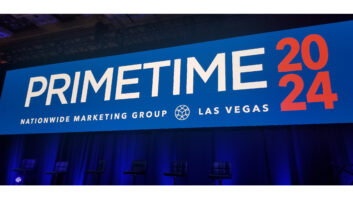The Boston terror attacks may have pulled the news media’s attention away from the shenanigans of North Korean dictator Kim Jong-un, but IHS iSuppli has taken a look into what a war on the Korean peninsula would mean for the CE world.
In a word: bad.
IHS noted that about 66 percent of the world’s NAND flash and 70 percent of the tablet display manufacturing takes place in South Korea. So any outbreak of hostilities would essentially result in the immediate halt of smartphone, tablet and computer manufacturing worldwide.
To put things in perspective, not being able to buy a gadget for a period of several months would pale in comparison to the immense disaster that a major conflict with North Korea would entail.
But if we separate out the human toll and look at what a war would do from a business perspective, the disruption could crash several industries. IHS believes the worldwide electronics supply chain would grind to a halt.
On the bright side, IHS does not believe war is imminent or even likely, and helping to alleviate tensions are that the recent joint U.S.-South Korea military exercises have ended. This should take away Jong-un’s main reason to scream threats at his neighbor and bring the local tension down to their normal hair-trigger level.
However, the possibility that war or a major incident of some type could happen at any time should encourage manufactures to plan for any similar such manmade or natural disaster.
Samsung and SK Hynix, the memory makers responsible for much of the world’s production of that item, are both headquartered in Seoul. To make matters worse, each has a major factory complex within 30 miles of the city.
Seoul is only about 30 miles from the demilitarized zone that separates North and South Korea. It is by far the most heavily fortified stretch of land on the planet. Thousands of pieces of artillery, along with rocket launchers, lie along its length, and the South Korean capital is well withinrange of many of those weapons. Any war would immediately result in massive destruction in and near Seoul as a large portion of those weapons unload on the city. This does not take into account air strikes and the total chaos that would erupt after the first shots were fired.
On the cellphone front, Samsung and LG together have about 30 percent of that market. The numbers here are better, but not much.
IHS estimated that a six-month disruption in supplies of memory and tablet displays would prevent hundreds of millions of phones, tablets and computers from being made and shipped. The domino effect is easy enough to visualize as other component manufacturers, accessory makers and finally retailers feel the squeeze.
Larger-size display panels would also be hard hit. LG Display and Samsung Display together were responsible for 49.6 percent of LCD panels, 10 inches and larger, shipped in the fourth quarter of 2012, IHS said.
As the industry learned two years ago when massive flooding in Thailand basically halted hard drive manufacturing for months, resulting in a major shortfall in supply and corresponding increase in prices, companies take a risk when they manufacture critical components in one region.
Not that there is any short-term resolution to this problem, but with large portions of the world’s economy so dependent on certain items, a bit of foresight seems in order when deciding where something should be built.













